Why the People of Alberta, Canada, Name Everything After Winston Churchill
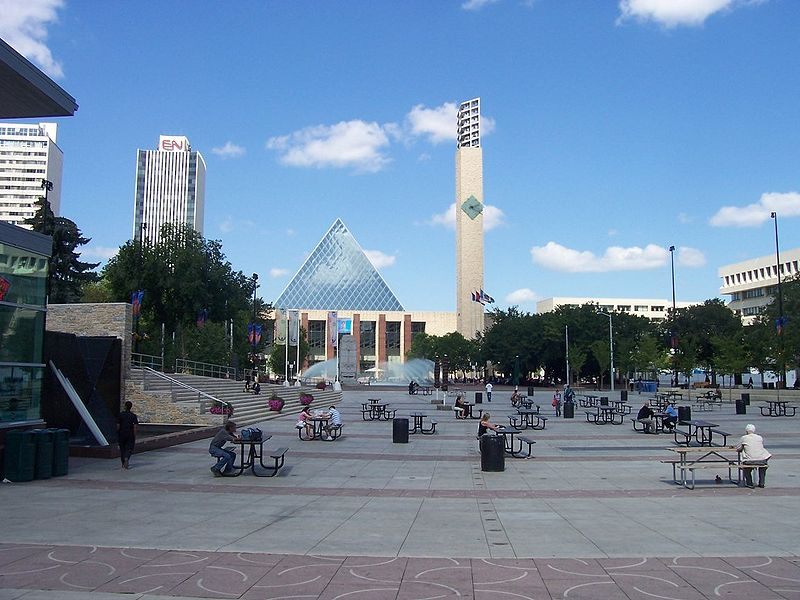
Churchill Square in Edmonton, Canada. (Photo: Traveler100/WikiCommons CC BY 3.0)
Smack dab in the middle of Edmonton, Alberta, is a large, concrete public plaza named Sir Winston Churchill Square. Kitty corner from that is the Churchill Wire Centre, a heritage building and former home of Edmonton’s telephone exchange. Take the light-rail train from Churchill station for one stop and you can see the remains of Churchills, a beloved British-style underground pub that has yet to be replaced. A bit further away, in the nearby suburb of St. Albert, chances are you’ll make use of Sir Winston Churchill Avenue, one of the city’s main thoroughfares.
Sir Winston Churchill is an iconic British politician and military commander, to be sure. And there is no shortage of things that have been named after him, all around the world—from nuclear-powered fleet submarines to entire mountains in Antarctica and Alaska. But nowhere on earth has Churchill’s name wormed its way into public nomenclature quite the way it has in Alberta. And nobody seems to know why.
Churchill loved Canada, but he visited Alberta only once, in August 1929, as part of a month-long, cross-country railway trip. While on Mountain Standard Time Churchill gave a few speeches, toured some oil fields, and remarked, upon arriving in Calgary, “I’ve heard so much about this wonderful province of Alberta that I don’t want to miss anything.” That’s about it. Yet nearly a century later, his influence subtly but doggedly lives on through maps and signage.
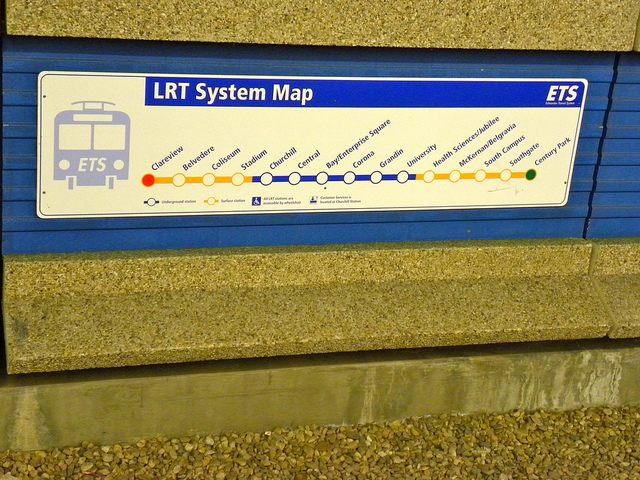
An LRT map showing Churchill Station in Edmonton, Canada. (Photo: JasonCrackle/flickr)
In Southern Alberta, the cities of Calgary and Lethbridge each have a high school named after Churchill; the former also boasts an aquatic center. On the western edge of the province, in the Rocky Mountains, you’ll find the Winston Churchill Range, a cluster of 27 peaks tucked inside Jasper National Park. And in the northern half of Alberta is Sir Winston Churchill Provincial Park, a peninsula in the middle of Lac La Biche that’s home to more than 230 species of bird.
The first time Alberta named something after Churchill was an odd one-off gesture midway through World War II, when residents in Edmonton’s tony Glenora neighbourhood petitioned city council to re-name two block-long stretches of adjoining numbered streets after the then-sitting British Prime Minister. This little nook is still known as Churchill Crescent today. But it wasn’t until after Churchill’s death, on January 24, 1965, that things really kicked into high gear.
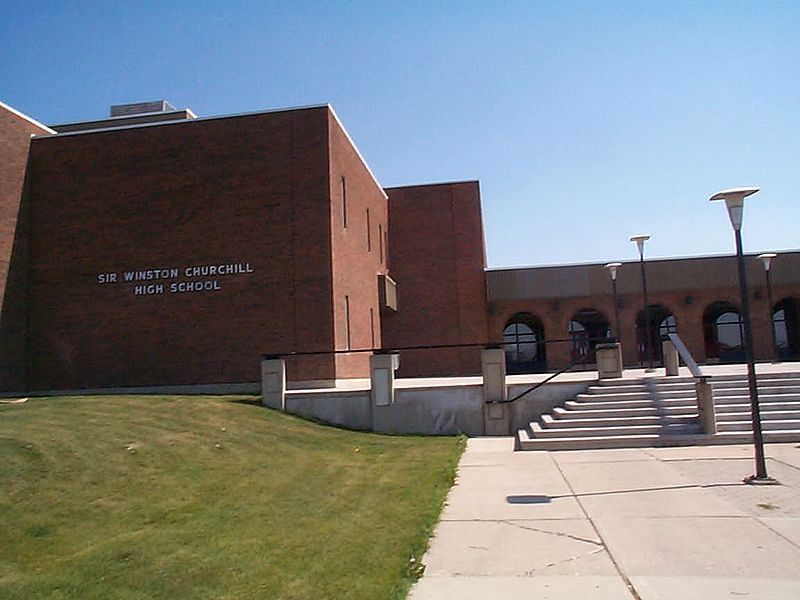
Sir Winston Churchill High School in Calgary, Alberta. (Photo: Public Domain/WikiCommons)
That spring, as tributes rang out from around the world, the Alberta government’s speech from the throne included a shout-out to Churchill’s “indomitable spirit and courageous leadership,” which later led to the Legislative Assembly deciding to rename a provincial park near the town of Lac La Biche (until then known as “Big Island”) after the man. Even at the time, justifications were strained. The naming made sense, claimed one account, because Churchill’s “home was an island.” Also, he loved nature.
Back in Edmonton, a couple of aldermen had vague ideas of their own. They proposed that the city, too, should name something after the political leader. They weren’t sure exactly what. But once the idea was out there, suggestions started pouring in. Council eventually settled on perhaps the most plum spot of all: the grand new public square that was about to be built in the heart of downtown, right in front of a new flagship branch of the library. Here, however, questions started to be raised about the appropriateness of using a foreigner’s name. As alderman Julia Kiniski wrote in a letter to the editor, “How can we inspire our young people when we are so afraid to recognize our own great people?”
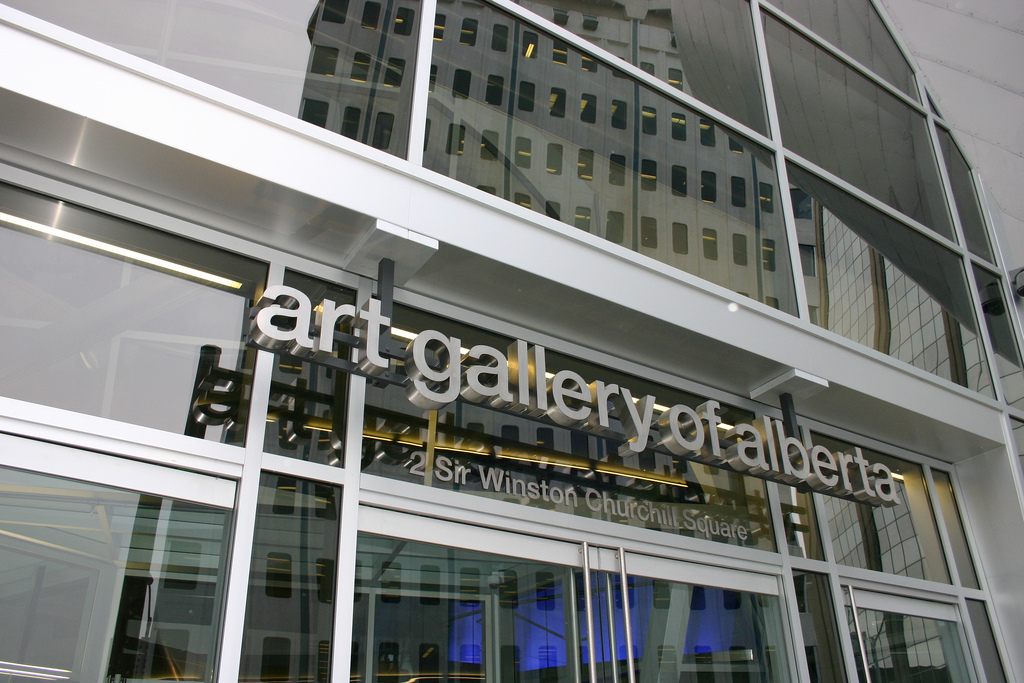
A sign for the Art Gallery of Alberta, at Sir Winston Churchill Square. (Photo: Mack Male/flickr)
Kiniski’s concerns tapped into a larger and thornier Canadian self-esteem double bind. Naming researchers Fae L. Korsmo and Michael P. Sfraga write that official names “generally reflect the outcome of power relations between different groups along linguistic, ethnic, or center-periphery lines.” But they didn’t account for Canada’s raging inferiority complex. So while the country’s governments have been only too willing to erase, say, longstanding aboriginal names off of their maps, when it came time to find new names to replace them with, those same governments can be reluctant to cast themselves into the spotlight. Instead, they anxiously crib from the halls of fame of more established Western nations. By the way: The other example Kiniski cited as proof of foreign naming run amok? The John F. Kennedy Tower. In Alberta.
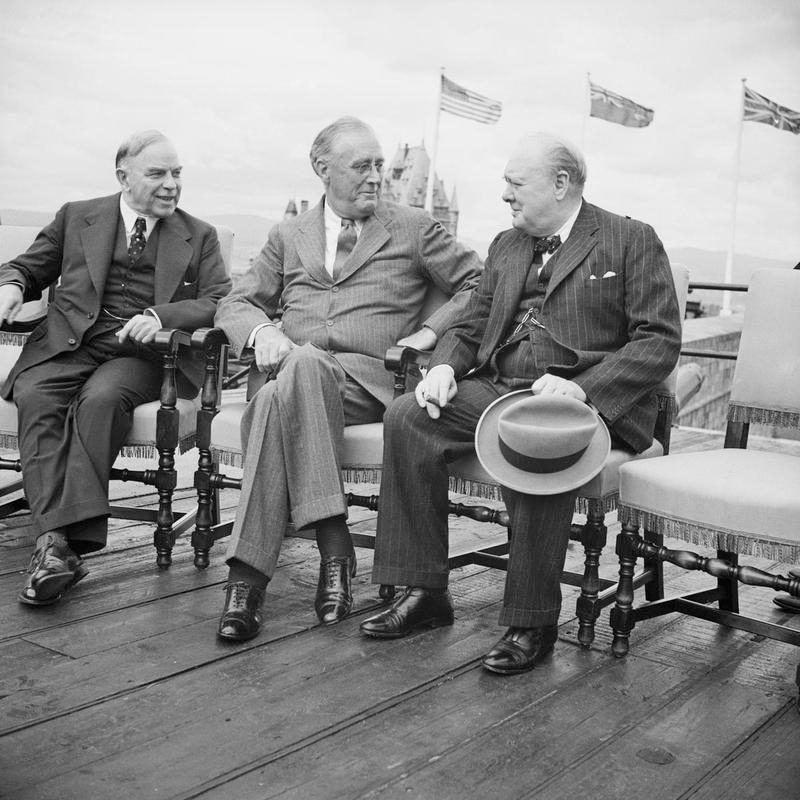
Canadian Prime Minister Mackenzie King, President Franklin D Roosevelt, and Prime Minister Winston Churchill in conversation during the Quebec conference on 18 August 1943. (Photo: Public Domain/WikiCommons)
Locals may have been particularly anxious about naming at the time because they were, like the rest of Canada, preparing for the country’s centennial in 1967—of which the construction of the nascent Churchill Square would be a part. It’s hard to think of a worse time to name your big new public square after a British politician than when you are literally celebrating your independence from the country he ran.
As a central landmark, Churchill Square set the tone for naming in Alberta for years to come. Many of the other names in use today, including the LRT station, include Churchill less as an active endorsement of the man than as a basic geographic reference point to the square already named after him. Curiously, however, there is another engine quietly powering Alberta’s Churchillmania—and it begins before the man was even dead.

Sir Winston Churchill, c. 1942. (Photo: Public Domain/WikiCommons)
“I must confess that I don’t know the reason why Churchill is such a ‘hit’ in Edmonton” and Alberta, says Kenneth Munro. And if anyone would have a unifying theory, it’d be Munro: he’s the executive secretary of the Rt. Hon. Sir Winston S. Churchill Society of Edmonton, a non-profit society with a rather unlikely claim to fame.
The story goes that in 1964, a trio of influential locals were at the annual banquet celebrating the Scottish poet Robbie Burns. At the time this was one of Edmonton’s largest social events, but it struck the group that this energy might instead be directed towards a legendary figure who was still alive—and they all agreed that if that were their metric, then Winston Churchill was the obvious recipient. The trio quickly expanding to a septet, they wrote a letter to the man himself, asking for his blessing. Sure enough, Churchill’s private secretary wrote back, approving their request and adding, “He bids me to send you his good wishes.”
Today there are Churchill Societies all around the world. But the very first one was formed in Edmonton. It was also the only one founded during Churchill’s lifetime. And once Churchill died, the society was an important pillar of support for the naming fanfare that swept Alberta shortly thereafter. An editorial in the Edmonton Journal from 1965, calling for a main downtown corridor to be renamed after Churchill, makes more sense when you consider that the newspaper’s publisher at the time, Basil Dean, was also one of the society’s founding members.

Prime Minister Winston Churchill and his daughter, Mary, stand by the Horseshoe Fall, part of the Niagara Falls in Canada on August 12, 1943. (Photo: Public Domain/WikiCommons)
For the most part, modern Albertans seem fine with important pieces of their province being named after Churchill. The website for Sir Winston Churchill High School in Calgary, for instance, which opened its doors in 1970, reports that it is “a privilege to be part of a school named in his honor,” without ever acknowledging how bizarre and arbitrary that honor really is. But if Albertans ever want tips on how best to rise up in nomenclaturial revolt, they need only look (even further) north.
A few months after Churchill’s death in 1965, President Lyndon Johnson accidentally kicked off a long, complicated debate about naming rights in the United States when he decreed that Alaska’s Mount McKinley, the highest mountain peak on the continent, would be officially renamed Mount Churchill in celebration of Sir Winston. Johnson’s justifications were even flimsier than the Churchill-loved-nature excuses offered up in Alberta, and according to some accounts, Johnson only made such a grand gesture at all because he had missed Churchill’s funeral due to illness, and thus missed out on an informal meeting with the other world leaders who were in attendance. That’s right: the largest mountain in North America was officially given a new name, infuriating hundreds of thousands of Alaskans in the process, to appease a perceived social gaffe.
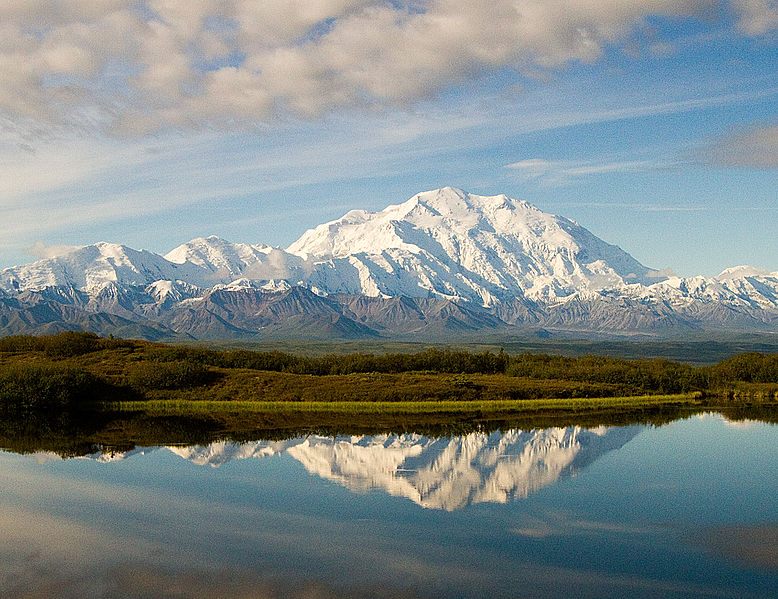
Alaska’s Mount Denali, formerly called Mount McKinley. In 1965, there was a proposal to rename the peak Mount Churchill. (Photo: Denali National Park and Preserve/WikiCommons CC BY 2.0)
Luckily, Johnson’s plan backfired. Even though the north and south peaks in the region were dubbed Churchill Peaks in 1965, it wasn’t actually a renaming. Rather, this was a second official name, in addition to Mount McKinley. But the main reason it didn’t work? People refused to use the new name. Government bodies stuck with McKinley—a park ranger I spoke with said she’s never heard the term “Churchill Peaks” once in the 23 years she’s worked there—and the Alaskans preferred the indigenous Athabaskan term Denali anyway. The Obama administration rendered this all a moot point last year anyway, officially renaming the mountain Denali and wiping all other names, even the obscure, shoehorned-in ones, off the public record.
So if Albertans decide they don’t like Churchill’s name being randomly plastered all over their public squares, mountain ranges, high schools, provincial parks, telephone exchanges, train stations, fish-and-chip restaurants, and aquatic centers? There’s only one thing to do: ignore them for 50 years and hope they go away.





Follow us on Twitter to get the latest on the world's hidden wonders.
Like us on Facebook to get the latest on the world's hidden wonders.
Follow us on Twitter Like us on Facebook